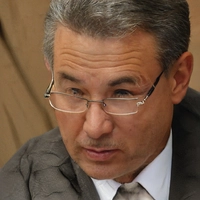Ever wondered if your hard-earned money is making the biggest impact when you donate to charity? You're not alone. Lots of us question where every last cent of our donations actually goes. Surprisingly, there are charities out there that promise 100% of your donation goes right to the cause. Sound interesting, right?
Understanding why donation allocation matters is crucial. It’s not just about feeling good or doing your part; it’s about ensuring that your money does what you intended—helping those in need, not funding fancy offices or sky-high salaries.
But, wait a second, you ask, how do these charities cover their operating costs if every dollar goes to their causes? They often fund overhead costs through separate fundraising initiatives or endowments specifically set up for this purpose. This way, they can promise donors that every cent contributed directly aids the cause.
- Why Donation Allocation Matters
- How Charities Fund Overhead Costs
- Identifying Transparent Charities
- Reliable Examples of 100% Donation Charities
Why Donation Allocation Matters
Picture this: You donate $50 to a charity and assume it all goes to feeding hungry children. But hold on, what if only $30 of that actually reaches them? That’s why understanding donation allocation is super important. Not all charities make it clear where your money ends up.
Let's break it down. Donation allocation refers to how charities split incoming donations between actual program work and other expenses, like administration or fundraising. While both are essential, it's crucial to ensure your gift aligns with your intentions—whether it's making a direct impact or supporting overall operations.
Transparency Equals Trust
Transparency builds trust. If a nonprofit is upfront about how they use donations, you’re more likely to trust them with your money. A whopping 73% of donors reported in a recent study that they would donate more if they had more insight into how donations are spent.
The Impact of Every Dollar
Ever heard the phrase 'every dollar counts'? It’s true. Efficient donation allocation maximizes impact. For example, if $90 of every $100 goes to charitable programs, your donation is working harder. Sadly, not all organizations can reach these numbers, so checking where donations go is worth your time.
Here’s a small table summarizing how different charities allocate their funds:
| Charity Name | Program Percentage | Expense Percentage |
|---|---|---|
| Charity A | 85% | 15% |
| Charity B | 93% | 7% |
| Charity C | 75% | 25% |
Ultimately, making informed choices about where you donate can ensure your donations make the biggest difference for the causes close to your heart.
How Charities Fund Overhead Costs
If you've ever scratched your head wondering how these charities manage to fund their overhead costs without dipping into donations, you're in for a revelation. Rest assured, it's not magic, but it's pretty clever.
First up, many organizations have savvy strategies for keeping the lights on while ensuring every cent of your donations aids the cause. Let's dive into a few of these approaches.
Separate Fundraising Initiatives
Some nonprofit organizations run dedicated fundraising campaigns specifically for their operational expenses. By directly appealing to loyal supporters who believe in the charity's mission, they often secure enough funds to cover overhead without touching donations meant for programs.
Grants and Endowments
Ever heard of grants or endowments? Well, charities use these as a solid financial backbone. Grants from the government or private sources, along with endowments from generous benefactors, often support operational expenses. By having a portion of operating costs covered through these means, they ensure that transparency is maintained.
Corporate Sponsorship
Corporate partnerships can be a game-changer. Companies looking to give back to the community often partner with charities, supplying them with either direct financial support for operational costs or offering in-kind donations, such as office supplies or spaces.
Investment Income
Some larger charities possess investment portfolios. The income generated from these investments is another stream that funds overhead costs. It's a savvy way to ensure sustainability without compromising the donation flow to the cause.
Volunteer Support
Lastly, volunteer support is invaluable. By engaging volunteers for administrative tasks, charities can drastically cut down on paid staff costs. It's a win-win scenario where the volunteer gains experience, and the charity keeps costs down.
Through balancing these strategies, charities can promise that when you donate, your money makes the biggest impact where it truly counts.

Identifying Transparent Charities
So, you're ready to find those charities that promise and deliver 100% of your donations directly to the cause. But how do you weed through the clutter to spot these gems? It’s not as daunting as you might think.
Look for Detailed Financial Reports
A charity that’s upfront about its financials usually has nothing to hide. Dig into their financial statements, which should be available on their website. Transparent nonprofit organizations will show detailed breakdowns of income and expenses. This will enable you to see exactly where your money goes.
Check Out Third-Party Ratings
Services like Charity Navigator, GuideStar, and the Better Business Bureau Wise Giving Alliance are there for a reason. They offer ratings and evaluations for thousands of charities based on transparency and financial health, so you can make an informed choice.
Research Their Funding Sources
Charities that use 100% of donations for the cause usually have other ways to cover overhead expenses. Look into whether they have corporate sponsors, private endowments, or special grants specifically dedicated to operational costs. For example, Charity: Water is well known for using 100% of public donations for water projects, financed separately through special partnerships.
Direct Contact for Assurance
When in doubt, don’t hesitate to reach out directly to the charity. A simple phone call or an email inquiry can clear up many uncertainties. Honest nonprofits will be happy to discuss how they allocate funds and the impact of your contributions.
The effort to find transparent charities is worth it when you know your generosity is making a real difference. Happy giving!
Reliable Examples of 100% Donation Charities
Finding charities that give every bit of your donation directly to their cause isn't easy. Yet, some organizations have made this promise a reality. Here's a list of groups you can trust to ensure your money helps where it matters most.
Charity: Water
Charity: Water is a shining example of a nonprofit where 100% of public donations fund clean water projects. They achieve this by using a separate group of private donors to cover all their administrative costs. Fancy having a lifelong impact on communities without wondering where your money goes? This might be the place to start.
The Robin Hood Foundation
Focusing on reducing poverty in New York City, the Robin Hood Foundation uses endowment funds to manage its operational costs. This ensures every dollar given by donors goes directly towards helping those in need. Now, that's a direct line from your wallet to genuine impact.
Direct Relief
If healthcare aid is close to your heart, consider Direct Relief. They funnel 100% of donations to health services across the globe. From distributing medical supplies to funding healthcare initiatives, your contributions here are always used effectively.
| Charity | Focus | Donations Usage |
|---|---|---|
| Charity: Water | Clean Water Projects | 100% to projects, admin via private donors |
| Robin Hood Foundation | Poverty Reduction | 100% to efforts, admin via endowment |
| Direct Relief | Healthcare | 100% to health aid, admin via other funding |
While it's great to see your donations max out their potential, it's important to do some homework. Always verify charity claims by checking their financial reports or using watchdog groups like Charity Navigator. This way, you can keep track of how your money gets spent without second-guessing.




